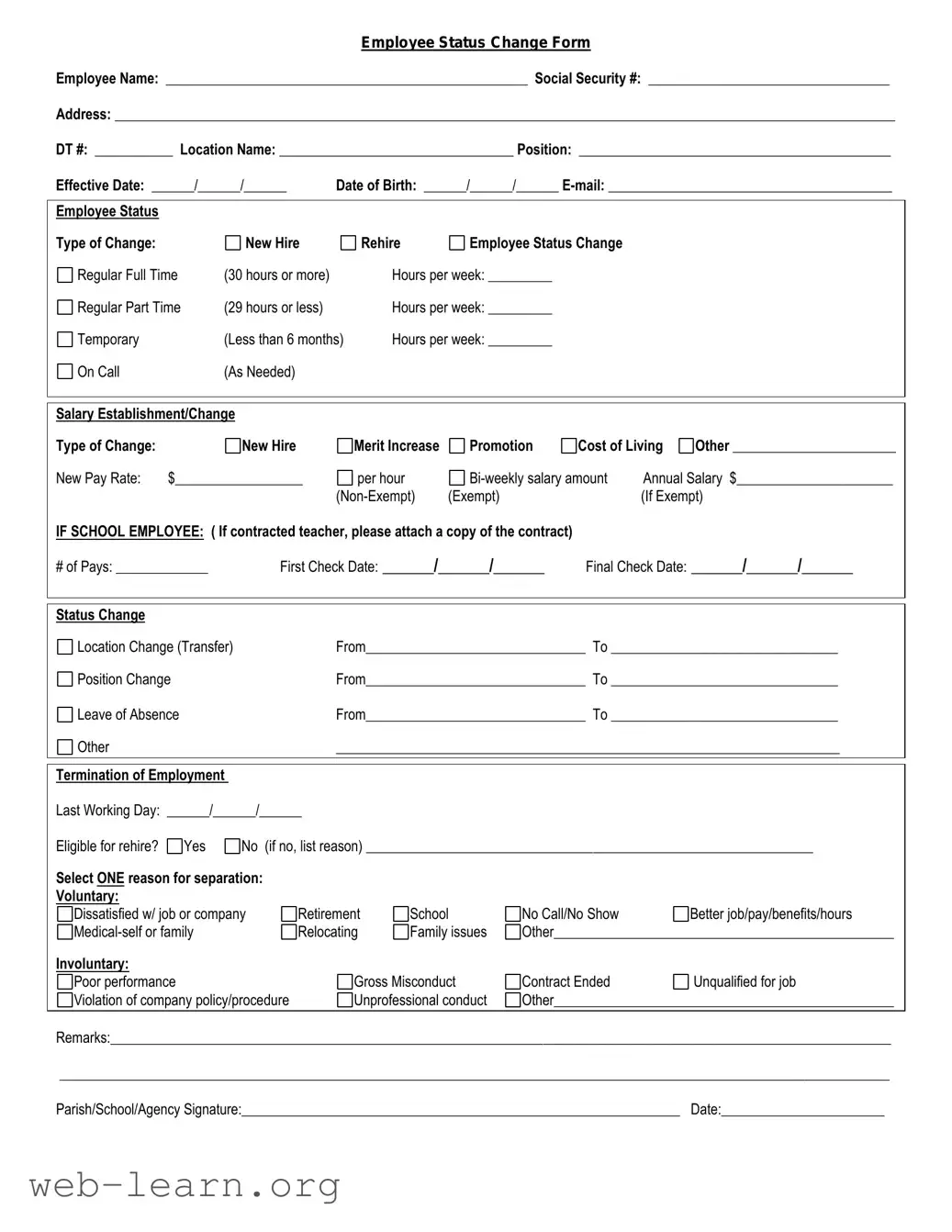Filling out the Employee Status Change form can feel straightforward, but many individuals fall into common traps that can lead to complications later on. One primary mistake is leaving out essential details. Employees often forget to include their full name, department, or position. Omitting this information can cause significant delays in processing the request, as HR may struggle to identify the employee properly. Ensuring all fields are completed can help streamline the process.
Another error frequently made is not checking for accuracy. People sometimes rush through the form, ending up with typos or incorrect information regarding dates, salary, or job titles. Such errors might appear minor, but they can have serious repercussions, particularly in terms of payroll and benefits. It is crucial to double-check all entries before submitting the form to avoid these potential pitfalls.
Confusion about the change type is also common. Employees may misinterpret whether the form is intended for a promotion, job transfer, or termination. Each type of change requires specific information and procedures. If an employee selects the wrong category, it can lead to miscommunication or inappropriate actions taken by the employer. Clarity in the purpose of the form is vital.
Not submitting the form to the right department is another frequent mistake. Employees sometimes assume that any HR personnel can process their request. However, different departments may handle various aspects of employment changes. Understanding who manages these forms can prevent unnecessary delays and confusion.
In many cases, individuals neglect to follow up after submission. After turning in an Employee Status Change form, it’s wise to check in with HR. Failing to do so can leave employees in the dark about the status of their request. A proactive approach inquiring about the progress can ensure that necessary adjustments are made promptly, if needed.
Finally, one of the biggest mistakes is not keeping a copy of the submitted form. Having a personal record of what was submitted is important in case of any disputes or confusion in the future. This document may serve as a reference point to clarify any misunderstandings about the employee’s status change.

